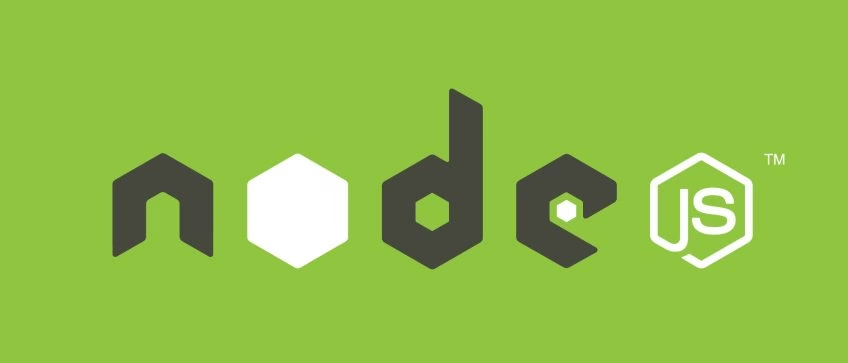
How to Secure Node js Applications?
Interested in knowing how to secure node js applications?
This is exactly what we will answer in this article.
You need to build a web app, and you‘ve decided Node.JS is the right tool to build it. But, you‘ve heard the horror stories of applications - or even entire companies - being robbed and humiliated by attackers. What do you do?
I‘m going to outline some of the JS security threats encountered by every developer, technical co-founder, or VP of engineering that wants to develop a node.JS application.
We‘ll discuss some web security strategies for your business, and even some Node.JS security best practices and code to get you started right away.
Is Node.JS Good for secure applications?
Node.JS can be a great choice to create a secure web app. Many great companies use node.JS for web development; it has a great community, awesome frameworks, and server-side JavaScript that has proven to be great for real-time applications.
It is one of the top 4 languages in the cloud and supported by most of the platform-as-a-service providers - making it a great choice for startups.
But, Node.JS is vulnerable to many of the same threats as every other language used on the web. First, let‘s take a look at some facts about web app security breaches.

Get a complimentary discovery call and a free ballpark estimate for your project
Trusted by 100x of startups and companies like
The Punishing Cost of Security Failures
Software security experts and attackers are in a constant arms race. This means that right now, the state of web security isn‘t any better than it was 20 years ago.

As more and more of our lives, connections, information, and money move online, the threat from security breaches escalates.
The Ponemon Institute Cost of a Data Breach Study demonstrates how a data breach can cost millions of dollars, with the average cost of each lost or stolen data record being $158 dollars.
How many data records do you plan to have on your system? And in a worst-case scenario, how much could a data breach cost you? If you do the math, you will probably find the potential damage to be frightening. And things are only going to get worse.
The Verizon Data Breach Investigation Report found that attacks on web applications accounted for 40% of all incidents resulting in a data breach, and were the single biggest source of data loss. When you consider that web apps made up only 8% of reported incidents, you quickly realize how vulnerable they can be.
If you are building a custom web application, then world-class security protection is not just important - it is absolutely essential. So in this demanding environment, do you stand a chance of succeeding with your web app?
Yes. But you need to be one of the few companies that truly takes security seriously. This is not just a problem for your developers or your security team; it‘s a problem for all levels of management.
Secure Web Applications Require More Than Just Code
With the security of the app being so important to your bottom line, you need to take it seriously. You‘ll need a great code of course, but you will also need higher-level strategies
- Ongoing system for detecting vulnerabilities.
- An action plan for when a breach does occur.
These will need to be built into your business plan and be understood by everyone, not just the developers. With that in mind, let‘s take a look at how you can start protecting your app.
How to secure Node js applications against the most common attacks?

In Node.JS application development, you‘ll find the most common types of attack are
- SQL Injection;
- Cross-site scripting (XSS);
- Brute force.
Let‘s take a look at some examples and how you can deal with these. The following is not exactly a Node.js security checklist, but it‘s a place to start.
SQL Injection Attacks
An SQL injection attack is where an SQL query is ’injected‘ into your web app's database. Once inside, the malicious code can read information and do damage.
Essentially, attackers are trying to disguise malicious code as input data. A great way to prevent this is with prepared statements. Rather than building a statement with user input variables, you‘ll write out the SQL statement first, then add the user input. Using node-postgres it might look something like this:
var q = 'SELECT name FROM books WHERE id = $1';
client.query(q, ['3'], function(err, result) {});
A great tool for checking SQL injection vulnerabilities is sqlmap. They describe it as “an open-source penetration testing tool that automates the process of detecting and exploiting SQL injection flaws”. Use it on your application to check for any mistakes!
Cross-Site Scripting Attacks (XSS)
This type of attack has been around since the 90s and is now becoming a huge problem for developers. Cross-site scripting is another type of injection attack, which occurs when an attacker inputs malicious code into a legitimate website by exploiting user inputs.
Think of a website where you can view other users profiles. Now, imagine one of the users has some malicious code in his username. If the site is poorly coded, when you view the profile it will read the username and actually run the malicious code!
This type of attack is much more common that most web developers like to admit. Luckily, you can make it much more difficult for attackers with a few simple steps.
Setting the correct HTTP headers is a good place to start. The headers you will need are
- Strict-Transport-Security
- X-Frame-Options
- X-XSS-Protection
- X-Content-Type-Options
- Content-Security-Policy
In Node.JS, you can use the helmet module to set these. It‘s a collection of 11 modules that you can just drop into your app to boost security against this type of attack.
Here‘s a basic set it up:
var express = require('express')
var helmet = require('helmet')
Hire expert developers for your next project
1,200 top developers
us since 2016
var app = express()
app.use(helmet())
Brute Force Attacks

Probably the simplest form of attack, this one involves trying every possibility to find a solution. In your web app, this could mean finding a password by checking millions of likely passwords. To protect against this you need to slow down the rate an attacker can make guesses.
In Node.JS, you can use the express-limiter package designed just for this. There are a few too many details to describe here, but check out the package to get an idea of how it might fit into your application.
In addition to this, protecting against brute force requires a good password policy, such as
- Forcing users to have strong passwords;
- Using multi-factor authentication;
- Having a secure password recovery process.
A strong password is difficult to crack, but multi-factor authentication is becoming more and more essential.
Password recovery processes are often overlooked. Many apps allow you to retrieve or reset a password via email with no extra security checks. This means someone with access your email has access to any account with email recovery.
Obviously, this is a bad thing, and you don‘t want your app to be in this group. There are a few solutions. One way to avoid this could be a secret question and answer sequence.
Keeping Your node js Applications Secure - Long Term
Of course, there are many more types of attack, and we‘ve just scratched the surface of how to secure Node JS applications - there are entire books written on the subject. If you want to create an app on a larger scale, you will need either a lot of time or a team of skilled developers.
Some of your options include:
- Spend a LOT of time learning web app security yourself;
- Hire a Freelance Developer;
- Hiring a team of In-house developers;
- Use a Development team.
If your app is fairly complex, you can forget about doing it yourself or even hiring a freelancer. Developing and maintaining a secure web app involves too much work for any individual. This means your next step will probably be to find the right team.

If you don‘t have an in-house team and you aren‘t keen on building one, check out our post on mobile development outsourcing (most of it applies to web apps too). This will give you an insight into some of the considerations, and the associated costs.
Key considerations when designing security solutions for Node.js apps
Now that you have learned tips to keep your Node.js applications secure, let’s talk about key considerations when designing a security solution. These are as follows:
1. The need for expert developers with great knowledge of Node.js security aspects
When we explained the security tips, you might have noticed a common thread! It’s a fact that security vulnerabilities often arise due to development issues. Bad coding practices, a flawed technical solution, and the lack of reviews often result in key application security issues.
Whether you talk about XSS attacks, RegEx DoS (“regular expression denial of service”) attacks, injection attacks, or other application security risks, you will often find that faulty development processes have created them.
Alternatively, a project team might have used software components with known vulnerabilities. Hackers will easily target such applications. A faulty technical solution creates such security risks.
You can’t compromise on the quality of developers. Not only do you need developers with great knowledge of the programming language in question, but they should also understand security risks.
You need developers that work closely with the architect and project manager (PM). This helps you have robust technical solutions and review.
2. The importance of verification and validation (V&V) activities
You probably know that delivering a great software system requires both verification and validation. Verification refers to review, and you will likely implement detailed review processes. That will cover requirements, technical solutions, program specifications, test plans, test cases, and the source code.
On the other hand, validation refers to testing. You will likely undertake various kinds of testing, e.g., integration testing, regression testing, etc. These are important for delivering functional requirements.
Well, verification and validation activities are important for non-functional requirements (NFRs) like security too! You need expert reviewers to review your design, technical solutions, and source code.
Remember that Node.js is a runtime environment based on JavaScript. Unlike Java, a statically-typed language, JavaScript is dynamically-typed. JavaScript is versatile.
However, you might also inject variable types-related errors. Hackers exploit such errors to compromise an application.
Hire expert developers for your next project
Effective code review can help you to unearth security risks early in Node js applications. In fact, reviews play a key part in detecting security vulnerabilities like SQL injection.
You need to focus adequately on security and compliance testing. Make this a part of your “Continuous Integration” (CI)/”Continuous Delivery” (CD) pipeline, and don’t just treat this as the last item on a checklist! Adopt good practices like “Compliance as Code” for this.
3. Assess packages you install via NPM (Node Package Manager)
Your development team will likely use one or more popular packages in the project. The team will install these packages via NPM (Node Package Manager) since NPM helps in package installation.
NPM offers many useful open-source packages. This popular repository also helps to manage dependencies between packages. Node.js is a highly popular runtime environment for back-end development, and NPM packages are key reasons for that. The rich ecosystem of Node.js helps developers to gain productivity.
However, remember that there could be security vulnerabilities in these NPM packages. There’s good news though. The “npm audit” command helps you to run a security audit of NPM packages. This helps you to assess security risks.
4. Handling authentication in Node.js
Authentication is a key area to focus on when you develop a web application. In fact, the “Open Web Application Security Project” (OWASP) community considers broken authentication as the 2nd most important vulnerability.
Hackers might easily exploit this vulnerability even in Node.js applications. They might send service requests directly to the back-end of the app bypassing the authentication mechanisms. A web application might be vulnerable to this form of attack due to many reasons, e.g.:
- It permits automated attacks;
- The application allows weak passwords;
- The application has a weak process for recovering credentials like lost passwords;
- It doesn’t invalidate authentication tokens during the logout.
You can prevent such vulnerabilities in various way, e.g.:
- Implementing multi-factor authentication (MFA);
- Enforcing a strong security-policy including strong passwords;
- Implementing a server-side session manager to generate new, random session numbers after login;
- Implementing rate-limiting for login attempts.
Pay sufficient attention to this risk.
5. Preventing brute force attacks in Node.js applications
Brute force attacks are some of the most common attacks, and they impact Node.js applications too. You need architects and developers with the required knowledge.
You can prevent brute force attacks in various ways, e.g.:
- Block sources of requests by IP;
- Block sources of requests by IP and username;
- Implementing rate-limiters to protect APIs from brute-force attacks;
- Using brute-force protection middleware.
6. Preventing “Cross-site Request Forgery” (CSRF) attacks in Node.js applications
CSRF attacks are common, and they impact Node.js applications too. You need to follow appropriate techniques to prevent such attacks, and you need architects and developers with the required skills.
Using the Csurf middleware in Node.js can help you to prevent CSRF attacks. We recommend that you follow a suitable guide for this since it involves several steps. We are highlighting the following steps as examples:
- Initializing the application with the “package.json” file;
- Installing dependencies by using appropriate tools like a cookie-parser;
- Creating the appropriate files;
- Writing the appropriate code;
- Running the program.
The Csurf module helps to create a randomly-generated CSRF token, which prevents CSRF attacks.
7. Other resources, techniques, and tools to secure a Node.js application
You might be developing a sensitive application like a credit card system. Security is very important in such applications, therefore, you would need to formulate your security solutions well. Consider the following resources, techniques, and tools:
- Read the Node.js security working group documentation on GitHub. This group creates important resources that help developers to create secure Node.js applications.
- Remove the “X-Powered-By” header so that cyber-attacks can’t use it.
- Use a content-security-policy header to prevent “clickjacking”.
- Handle endpoints effectively in Node.js for different HTTP requests.
- Enable SSL/TLS so that the application uses HTTPS for HTTP methods like “PUT”, “POST”, “DELETE”, etc.
- Use tools like Snyk to detect and resolve vulnerabilities in dependencies.
- Use a middleware like HSTS (HTTP Strict Transport Security) to add “Strict-Transport-Security” to the HTTP header. It ensures that data sent from the client-side to the server-side passes through secure and encrypted channels.
- Implement parameterized inputs so that hackers can’t launch SQL injection attacks by sending in queries as user inputs. Study commonly-available sample code snippets to learn how to do this. These examples provide plenty of details including how to use the “const” keyword while coding.
- Use context-based encoding to prevent XSS attacks. Also use HTML encoding, CSS encoding, JavaScript encoding, URL encoding, etc.
Planning to secure your node js applications?
Security should be built into the core of every web app. The risks are becoming too great and the consequences are too severe. Node.JS can be great for developing a secure web application, and it has some great tools for you to get started right away.
But, keeping securing Node.JS web applications long-term will require consistent effort and dedicated resources. That's why it's a good idea to hire expert Node.JS developers to help you build a secure app and maintain it.
If you fail to make this commitment, your web app - and possibly your business - may well become another security breach statistic.
If you, as a business CEO or CTO, do not find the expertise in building secure and robust software applications in your project team, partner with a reputed software development agency like DevTeam.Space.
You can easily outsource software developers from our field-expert developers' community by sending us your initial app development and security specifications. One of our managers will get back to you to discuss how we can help.
Frequently Asked Questions on how to secure node js applications
Node.js is very secure. Security issues arise from the use of third-party packages, something which requires developers to be very careful.
You will need to do a detailed analysis of your web application in order to try to identify vulnerabilities. This will include an examination of cookies and how they are being used.
Node.js is used to create traditional websites and back-end API services. It is designed for use on non-blocking, event-driven servers.


